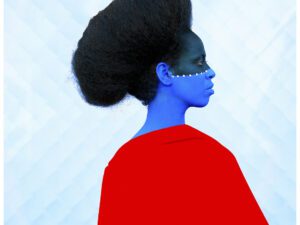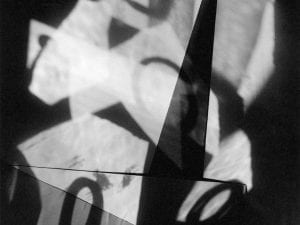Parisian-born, London-based Nhu Xuan Hua (b. 1989) is an internationally renowned fashion photographer. She has worked for magazines, including Vogue, TIME Magazine and The Wall Street Journal, alongside a variety of brands – from Dior and Levi’s to Universal Music. The artist’s subtly layered oeuvre often draws on her Vietnamese heritage, producing narratives that engage with themes of identity, origin and personal history. Nhu Xuan Hua’s family fled to France after the Vietnam War (1955-1975), which left her feeling “cut off from her roots.” Her solo exhibition at Fotografie Forum Frankfurt, Hug of a Swan, responds to this, crafting research gathered by interviewing family members into surreal portraits, digitally manipulated images and a site-specific installation. Here, bodies become vessels for stories, and objects offer new realities saturated with memory and tradition. We spoke to the artist in 2022, on the occasion of her exhibition opening at Huis Marseille, Amsterdam.

A: How important is your identity as a photographer? Where do heritage and tradition fit in?
NXH: My recent series function thanks to my Vietnamese heritage and upbringing. The series you and me, the fish and the moon, for example, is a clear tribute to Vietnamese dance and opera, seen through the eyes of a person who’s discovering a culture and language. vows, oysters and tangerines and sharp tongue, round fingers provide more subtle references to childhood memories spent in France. I also think that sound holds an important place in the process. Heritage and traditions are passed on through storytelling most of the time, and they don’t necessarily have physical forms. Stories can take the form of a song or conversation.
A: Can artists create in a way that doesn’t speak from their socio-geographic-political position?
NXH: Our environment is hostile, yet filled with so much beauty. I want to believe that we must forgive humans for just being humans sometimes. Some days I can and some days I can’t. We live in a political environment, so our actions have an impact on others whether we want it or not. It’s pointless to think that you can avoid being part of the big picture. To evoke a sense of gratefulness or acknowledgement of the place we live in is part of any honest story and is told with the heart. I think that there is a big difference be- tween being angry and being violent when it comes to standing up for your values. For me, a “positive” image is not to be seen as a piece of work from an idealist. It’s about being hopeful. This positivity is often used to counterbalance the darkest place one has happened to be in. For some, a vase with flowers can be purely decorative; for others, it means the world. Both perspectives are interesting and equally valid, as long as you question why the work gives you this impression.

A: You often play with the human form, showing an understanding for lines and form, transforming the body. In what ways are you trying to expand on the ways figures are represented?
NXH: A body is nothing without its story. One doesn’t carry the other, but both can glow because the other exists. I have been diving into my family history for some years now; the people that I get to photograph reflect my observations of my relatives’ features, even when I don’t purposely want to do this – somehow it finds a way to manifest. This can be through a hairstyle, a black kohl eyebrow drawn with care, legs positioned in a certain way or a hand gesture that says a lot about how the person feels. Your mind and soul are incredible vessels for transporting stories, whether these are ever told or if they’re kept inside. Examining the past means exploring relationships, whether physical or psychological. Our bodies are engines fuelled with care and love, but they are also fed with pain, which is equally important to portray.
A: What narratives are you crafting through this work?
NXH: Hug of a Swan is the title of the exhibition; it is an imaginative tale where photographs are elevated into a dreamlike sanctuary. Overall, it is a tribute to both past and present worlds, as well as a last embrace before letting memories go. It’s a swan song for a departure with no return – a kiss on the forehead to past experiences, tales, lies and re-invented realities puzzled by life itself.
fffrankfurt.com | Hug of A Swan until 9 April
Credits:
1. Nhu Xuan Hua, I’m home late, don’t you care where I’ve been? Extract from Honey Babe, 2020 © Nhu Xuan Hua, 2023
2. Nhu Xuan Hua, from the series Velvet (2016). Courtesy of the artist.
3. Nhu Xuan Hua, The distorted bench. Extract from Vows, Oysters and Tangerines, 2019 © Nhu Xuan Hua, 2023





